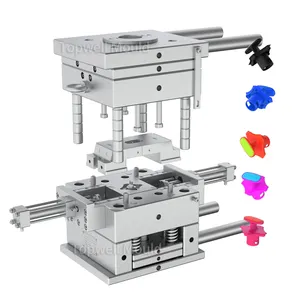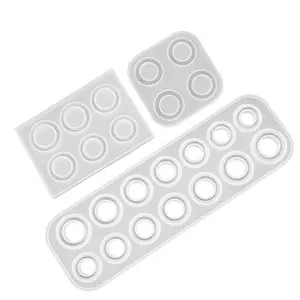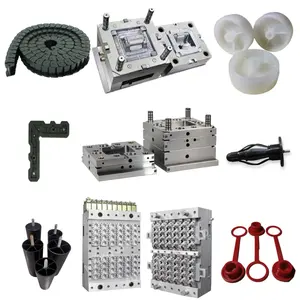Resin mold release refers to a substance or agent used in the process of working with resin molds to prevent the cured resin from sticking to the mold surfaces. The primary purpose of a resin mold release is to facilitate the easy removal of the finished resin castings from the mold without causing damage to the mold or the cast object.
Types of resin mold release
Mold release for resin agents come in various types, each tailored to specific applications and resin formulations. The choice of mold release depends on factors such as the type of resin being used, the complexity of the mold, and the desired finish of the cast objects. Here are common types of resin mold release agents. 1. Silicone-based mold release agents are popular for their versatility and effectiveness across a wide range of resins. They create a durable and non-reactive barrier between the resin and the mold, facilitating easy demolding. 2. Petroleum jelly (Vaseline): Petroleum jelly is a cost-effective and readily available mold release option. It is easy to apply and can be spread evenly on mold surfaces. 3 . Commercial mold release sprays: Mold release sprays for resin are aerosol-based mold release agents formulated for specific resin types. Resin mold release spray often provides a thin and uniform coating, ensuring an even release. 4. Parting films: parting films are liquid or spray-on release agents that form a thin film on the mold surface. They offer excellent release properties and are designed for intricate or detailed molds. 5. Wax-based mold release: Wax-based releases often contain a combination of waxes and other release agents. They provide a smooth and glossy finish on resin castings. 6. PVA (polyvinyl alcohol) mold release: PVA is a water-soluble mold release that can be applied as a liquid or spray. It forms a thin film that is effective in preventing adhesion.
Key features of resin mold release
The primary function of mold release for resin casting agents is to create an effective barrier between the cured resin and the mold surfaces. The barrier prevents the resin from bonding with the mold, facilitating smooth and damage-free demolding. Many mold release agents are versatile and compatible with various resin formulations, including polyurethane, epoxy, polyester, and others. Their versatility makes them suitable for a broad range of resin-casting applications. Resin mold release agents are designed for easy application. Whether in spray, liquid, paste, or powder form, they allow for convenient and uniform coverage of mold surfaces, ensuring an even release.
Mold release agents are formulated to be compatible with different mold materials, including silicone, rubber, metal, and plastic molds. The adaptability enhances their usability across diverse casting scenarios. For intricate or detailed molds, certain mold release agents, such as parting films or paste releases, provide excellent coverage, ensuring that the fine details of the mold are preserved during the demolding process. Resin mold release agents contribute to the reduction of surface defects on cured resin castings. By preventing the resin from sticking to the mold, they help maintain the integrity of the casting's surface, minimizing tears, distortions, or imperfections. Proper use of mold release agents contributes to the longevity and reusability of molds. The protective barrier they create minimizes wear and tear on mold surfaces, allowing molds to be used for multiple casting cycles.








































 浙公网安备 33010002000092号
浙公网安备 33010002000092号 浙B2-20120091-4
浙B2-20120091-4